Featured Articles
THE HAUSER CHRONICLES: Ronda Rousey
Ronda Rousey has been in the news a lot lately. The 28-year-old UFC women’s 135-pound champion and consensus choice as best female MMA combatant in the world is scheduled to defend her title against Bethe Correia on August 1. She has been featured in myriad publications ranging from Time Magazine and The New Yorker to Maxim, ESPN: The Magazine, and the Sports Illustrated swimsuit issue. Her autobiography – My Fight, Your Fight – was published recently by Regan Arts. Movie-goers have seen her on-screen in Entourage and The Expendables 3.
Most recently, Rousey was chosen over Floyd Mayweather as “Best Fighter” at the 2015 ESPY Awards, after which she stuck it to Mayweather with the declaration, “I wonder how Floyd feels being beat by a woman for once.”
Rousey stands at the complicated intersection of sex and violence. First and foremost, she’s a fighter with a fighter’s instincts and a fighter’s mentality. She won gold medals in judo at the 2004 and 2006 Junior World Championships and the 2004 and 2005 Pan Am Games before capturing a silver medal at the 2007 World Championships. She was a 2004 Olympian and earned a bronze medal in judo at the 2008 Beijing Olympics, becoming the first American woman ever to win an Olympic medal in her sport.
Rousey is now the face of women’s MMA. It’s a pretty face, with long dirty-blonde hair that extends below her shoulder blades. She looks at times like a model rather than a fighter. The camera is her friend. She’s photogenic and telegenic. She has charisma.
She’s also smart, verbal, cocky, and energetic with an instinct for finding the spotlight and knowing what to do when it’s shining on her.
She’s never boring.
On the surface, Rousey has an upbeat personality. But there seems to be a fair amount of anger bubbling not far beneath the surface.
“I’m complicated,” Ronda says. “Too complicated to be understood.”
Rousey’s mother was the first American woman to win a World Judo Championship; a feat she accomplished in 1984 at age 26. She now has a PhD in educational psychology.
Ronda was born in 1987. “I come from a family of very empowered women,” she notes.
She also comes from a dysfunctional family that makes the average dysfunctional family look functional. Her father committed suicide in 1995 after suffering complications relating to Bernard-Soulier syndrome (a bleeding disorder). Ronda suffered from a speech impediment as a child and was unable to speak in full sentences until age six. She had a tortured adolescence, highlighted by a love-hate relationship with her mother, who believed in tough love, with emphasis on the tough.
“I was very shy,” Rousey recounts. “I wore baggy clothes all the time. I had a lot of evolving to do.”
Meanwhile, judo was “the family business.” Ronda began learning the craft at age eleven and was obsessed with it as she grew older. She also became bulimic in her constant struggle to make weight. She was determined to pay any price necessary to succeed.
“I was raised with the mentality that, if you’re going to do anything, you’re going to do it to be the best at it,” Rousey told writer Tom Gerbasi. “The self-confidence that people see in me now has developed over time. It came mostly from doing well in sports. I felt that, if I was amazing in something, I’m actually a cool person and I should think more of myself. It’s something about medals, having a tangible thing to hold in your hand. It’s like, ‘Oh, look; I’m awesome.’”
After the 2008 Olympics, Rousey spent a year abusing her body in a different way. In My Fight, Your Fight, she acknowledges, “I had my Olympic medal. And I quickly realized how little happiness it brought me. I had endured so much to get to the Olympics. All along the way, I told myself that the result would be amazing; that it would be all worthwhile. But the truth was, it hadn’t been worth it. I got back from Beijing with a bronze medal and no home, no job, no prospects. I finally found a bartending job. I camped out in the car for a couple of nights before I got paid. I deposited my money in the bank and set out on my mission to find a non-automotive home. My first apartment was a twelve-by-twelve-foot first-floor studio. The only sink was in the bathroom and it constantly fell out of the wall. On more than one occasion, sewage would come up out of the toilet, and I’d come home from work to an apartment filled with s–t.”
“Building up my body and chasing the Olympic dream had made me unhappy,” Rousey continues. “I wanted to have a normal life. I wanted to have a dog and an apartment and to party. From the end of 2008 well into 2009, my plan involved drinking heavily, not working out, and cramming everything I thought I had missed into as short a time as possible. I started my morning with a smoke on the way to work. When I got to Gladstones [the bar where she worked], I would go behind the bar and mix dark and light ingredients that tasted like delicious iced mocha with vodka in it. I would sit and drink that all morning. On Sundays, these two hip-hop producer dudes would order surf-and-turf and Cadillac margaritas. They tipped me thirty dollars in cash and enough marijuana to get me high for several days. During the week, one of the regular bar patrons sold Vicodin to servers and would slip me one or two for passing the cash and pills between him and the waitstaff without our boss knowing. I spent that whole year lost.”
Then Rousey found salvation in mixed martial arts. She returned to the gym, resumed training, and had three amateur fights, winning them all via armbar submission in a total of 104 seconds. More on Rousey’s armbar later. That was followed by four professional bouts (two with KOTC and two with Strikeforce) that lasted a total of 138 seconds. At the same time, to make ends meet, she was working as a veterinarian’s assistant at an animal clinic, on the graveyard shift at 24-Hour Fitness, and as a judo instructor.
On August 18, 2012, Rousey ran her MMA record to 6-and-0 with a 54-second demolition of Sarah Kaufman. Three months later, UFC president Dana White (who’d stated publicly that UFC would never promote women’s competition) announced that the organization had signed Ronda as its first woman fighter. UFC then created its first weight class for women – 135 pounds – for Rousey.
She might not have “saved” UFC. But she was certainly a key component in reversing what appeared to be stagnation if not a downward trend in the organization’s popularity. That was evident at a press conference I attended at the Beacon Theatre in New York two years ago.
The press conference was part of a national tour designed to promote a series of UFC pay-per-view events. Jon Jones, Georges St-Pierre, Cain Velasquez, Alexander Gustafsson, Johny Hendricks, and Junior dos Santos were in attendance. But the spotlight shone brightest on Rousey, who was readying for her second fight under the UFC banner: a rematch of an earlier conquest of Miesha Tate.
The fighters were seated onstage at the Beacon Theatre. Dana White made a brief opening statement. Then fans (the event was open to the public) were invited to ask questions from the audience.
Rousey was wearing a short fitted red skirt, five-inch heels, and a black top that was notable for its decolletage.
“Your fight is stealing all the heat, all the headlines,” she was asked. “Is this a conscious effort on your part? Are you trying to outshine the guys?”
“It’s not like I’m purposely plotting all this out,” Ronda answered. “But if the opportunity is there, I’m going to play it up. The girls have to fight for attention. I can’t say it’s a bad thing that all everyone is talking about is the chicks.”
Asked if she hated Tate, Rousey replied, “I don’t use the term ‘hate.’ But I’ve learned more about her personality and I haven’t seen anything I like. I would compare being around her to chewing tin foil.”
When the Q&A ended, the combatants moved to the front of the stage to sign autographs. Eighty percent of the fans lined up for Ronda. The six men and Tate split the other twenty percent.
Rousey has good people skills. When dealing with the public, she’s affable and patient in answering questions and signing autographs. She has a ready smile that seems sincere.
But don’t push the wrong button.
Several months earlier, in an interview with Jim Rome on ESPN, Rousey had discussed the pros and cons of having sex before a fight.
“For girls, it raises your testosterone,” Ronda had said. “So I try to have as much sex as possible before I fight. Not like with everybody. I don’t put out a Craigslist ad. But if I’ve got a steady, I’m going to be like, ‘Yo! Fight time is coming up.’”
Now, as Rousey signed autographs, one of the fans in line shouted out, “Ronda; how many times do you have sex before a fight?”
“Get the f–k out,” Rousey responded.
“I’m just asking,” the fan pressed.
“I don’t give a f–k. If your mother was standing behind you and heard you ask that question, what would she say? I’m serious. Get the f–k out.”
At Rousey’s direction, the fan was escorted by security from the theatre.
I stood on the stage beside Rousey and talked with her for over an hour as she signed autographs.
Ronda is a writers’ fighter. She says what she thinks and is a veritable sound-bite machine.
Some of our conversation revolved around the changes that her new-found fame had brought to her life.
“Training is still my number-one priority,” Rousey said. “The difference now is that I used to have time between fights to chill out. Now there’s no break in the media attention. That’s just the way it is. Fortunately, I have a great team that helps me coordinate everything. It’s a trade-off, really. Instead of working odd hours at different jobs and fitting it around my training schedule, I have more media obligations. What’s happening now is better and more profitable.”
In the hour that followed, Ronda discoursed on a wide range of subjects.
* “Women’s eating disorders are a cause for me. The presentation of what a woman’s body should look like is all wrong. I’m in a weight-division sport, so watching my weight is part of my life. But when it come to things like women’s models, we’re presented with a false and even unhealthy ideal.”
* “I had a lot of hope with Obama. In some ways, I’ve been disappointed. I was expecting more change than we’ve seen. In politics now, what we’re given is an illusion of choice. But I was able to get my teeth fixed because of Obamacare. And I still like him.”
* “The world would be better if people said what was on their mind all the time.”
* “I try to be nice to people when they’re nice to me. But I wasn’t born to smile like an idiot and be polite no matter what. ‘Thou shall be polite’ is not a f—-n’ commandment.”
* “No one has the right to touch you without your consent.”
* “They wrestled naked in Greece.”
* “I didn’t get to where I am by being dumb.”
* “I’m single right now, so my relationship success rate is zero.”
That latter comment leads to a less than satisfactory facet of Rousey’s life. As catalogued in the pages of My Fight, Your Fight, her love life has been marked by an endless stream of failed relationships with loser guys (who, let’s not forget, she chose as boyfriends).
One of Ronda’s live-in boyfriends was a heroin addict.
“We would break up, but it always felt like the universe kept pulling us back together. The day he stole my car was the low point.”
A more recent boyfriend took nude photos her without her knowledge. Ronda found them on his computer, erased his hard drive, and waited for him to come home, at which point she “slapped him across the face so hard my hand hurt, punched him in the face with a straight right, then a left hook, kneed him in the face, and tossed him aside on the kitchen floor.”
“Time does not always heal all,” Rousey writes. “Sometimes, it just gives you more time to get pissed off.”
“The problem,” her mother told her, “is, you set the bar with your first boyfriend. After Dick, you could bring home a gorilla and we would be like, ‘Hello, sir. So nice to meet you. Can I offer you a banana?’”
Miesha Tate became the first opponent to last past the first round against Rousey when they met in their rematch. Ultimately, she tapped out at 58 seconds of the third stanza. Three more victories followed. Rousey vanquished Sara McMann in 66 seconds. Alexis Davis and Cat Zingano lasted 16 and 14 seconds respectively. Those are staggering numbers.
Rousey’s professional record is now 11-and-0 with ten of her victories coming in the first round and seven in the first minute. She is 5-and-0 in UFC competition. Because she fights under the UFC banner only twice a year, her struggle with bulimia is in the past. “For about four hours a year, I weigh 135 pounds,” she says. “My actual weight is closer to 150.”
Rousey’s success in the octagon is built on rigorous disciplined training.
“No one is easy until after you beat them,” she notes. “Anything can happen. Anybody can push you the distance, and it could be the person you least expect. So I assume that every single person is a danger to me and every single person is trying to beat me and hurt me, and I’m going to be prepared for every single person, no matter who it is. I want training to be the hard part and competing to be the easy part. I’m not going to train less and make competing harder. The knowledge that everything can be taken away at any second is what makes me work so hard. You have to be prepared to win on your worst day.”
Ronda’s good looks are a marketing plus, but they don’t help her once a fight starts. The fights aren’t a fantasy video game or scripted WWE extravaganza. They’re real.
Rousey writes left-handed but fights in an orthodox mode.
“I’m extremely hard to prepare for,” she says, “because I don’t walk out with a set game plan. I always walk out to improvise and be creative, and that’s hard to prepare for as opposed to someone who has a very rigid and predictable style. I see the other girl [in the octagon before the fight starts]. I lock in on her. I always try to make eye contact. Sometimes, she looks away. I want her to look at me. I want her to stare me in the eye. I want her to see that I have no fear. I want her to know that she stands no chance. I want her to be scared. I want her to know that she is going to lose.”
“I’m emotionless when I’m out there,” Rousey continues. “I see all the options and I look to finish. I try to always be the first one to engage. That way, they’re reacting to me more than I’m reacting to them. It’s easier to predict because I know, with every single thing that I do, there’s only so many right ways that they can react to it. I’ve memorized every single reaction that they could possibly have, and I have an answer to every single reaction that they have. So it’s not being able to see several steps ahead. It’s being aware of every single possible scenario and knowing how to deal with every scenario.”
Referring to a 39-second triumph over Julia Budd early in her MMA career, Rousey observed, “It only looks easy because that throw I used, I’ve done that throw probably thirty thousand times in my life. When you actually master something, it becomes easy. But getting to the point where you master it so it’s effortless for you, that’s the hard part.”
And there’s more.
“I dissociate from pain,” Rousey explains, “because I am not the pain that I am feeling. I refuse to allow pain to dictate my decision-making. Pain is just one piece of information that I’m receiving. I can choose to acknowledge that information or I can choose to ignore it.”
Rousey’s fights are not for the squeamish. She has a killer instinct and goes after opponents the way Mike Tyson did when Tyson was in his prime. And she damages opponents.
The Green Bay Packers of the 1960s had their famed end-sweep. Opposing defenses knew it was coming. But it was so well-executed that they couldn’t stop it. The same is true of Rousey’s armbar.
An armbar involves locking an opponent’s arm in, leveraging it, and hyperextending the elbow in a way that causes ligament damage and, if the opponent does not submit, dislocates the elbow.
“When people say that I’m a one trick pony and only have the one armbar,” Rousey told Tom Gerbasi, “they don’t realize that I have so many setups to that armbar that I don’t even know them all. When you’re watching boxing and you see somebody knock someone out with a right hand every time, they’re not like ‘Oh, they’re a one trick pony.’ No. They have a billion different setups for that right hand. Just because it ended with a right hand on the face, it doesn’t mean it’s the same thing every time. So many people are unfamiliar with grappling and they just see the armbar ending and they assume the setup is the same. But if you look back at all those fights, I’ve jumped into that armbar from many different positions. It ends the same way, but the setups are always different.”
“When you do the armbar,” Rousey writes in My Fight, Your Fight, “the aim is to put so much pressure on the person’s arm that you pop the joint out of the socket. You can feel it when it pops. It’s like ripping the leg off a Thanksgiving turkey. You hear it pop-pop-pop, then squish.”
Then, describing her use of an armbar against Miesha Tate, Rousey recounts, “Pulling her arm straight, I arched back until I felt the squish, her ligaments snapping between my legs. She was still trying to escape. I grabbed her hand and pushed it over the side of my hip, forcing her elbow to go more than ninety degrees in the wrong direction. I ripped off muscles from her bone and tendons. With a vice on her injured arm, I sat up to punch her in the face with my other hand. With her elbow fully dislocated, there was nothing holding her in that position anymore except the pain and her fear of me.”
“I try to win every fight in a way that my opponent never wants to see me again,” Ronda says. “After I win, for a little while, everything is right in the world. Winning feels like falling in love, except it’s like falling in love with everybody in the room all at once.”
Without fighting, where would Rousey be?
Meanwhile, whether or not one likes mixed martial arts, it’s clear that Ronda Rousey is happening at the moment. The mainstream media has seized upon her. She has been on the cover of numerous magazines and featured on television offerings as diverse as Conan and HBO’s Real Sports. Type her name into Google, hit “search,” and it brings up 14.5 million results.
Will she become a mainstream superstar? Will what’s happening now stick? Will the wave of publicity she’s currently surfing fade away or will there be bigger waves in the future to surf?
And who can beat her in the octagon? Rousey isn’t like boxer Mia St. John, who was promoted largely on the basis of her looks and could fight a little but was far down on any honest list of fighters ranked on the basis of their ring skills. Rousey is the most dominant woman fighter in the world today.
In the past, Ronda has said, “I think the style of fighter that I would have a problem with would be a very high quality striker with very good footwork and takedown defense.”
She has never been punched clean by a hard striker. How good is her chin? What happens if she gets taken deep into a fight?
The woman who most people in the industry think would be the most competitive opponent for Rousey is Cristiane “Cyborg” Justino, a Brazilian currently living in California, who competes at 145 pounds. Justino was sidelined in 2012 by a one-year suspension after testing positive for the anabolic steroid stanozolol. That fight is ten pounds away and maybe further.
For the moment then, there are two obvious answers to the question, “How do you beat Ronda Rousey?” . . . “You have to get to her before she gets to you,” and “You don’t.”
“When I came into MMA, I wanted to make money,” Rousey says. “But it was more important to me to be the best and most exciting competitor in the world at what I do. Not everybody is going to like me. I live a life of exposure. People are going to see pretty much how I am all the time. I’m not going to be on a first date with everybody all the time. Everything is out there. Whatever people think is what they think. Any mistake I make is going to be scrutinized. That’s why I’m apprehensive about accepting the term ‘role model.’”
It has been a strange journey. More twists and turns lie ahead. Rousey could be a very special vessel. And not just for MMA. MMA might be a platform for more important things. But what?
Thomas Hauser can be reached by email at thauser@rcn.com. His most recent book (Thomas Hauser on Boxing) was published by the University of Arkansas Press.
-

 Featured Articles3 weeks ago
Featured Articles3 weeks agoThe Hauser Report: Zayas-Garcia, Pacquiao, Usyk, and the NYSAC
-
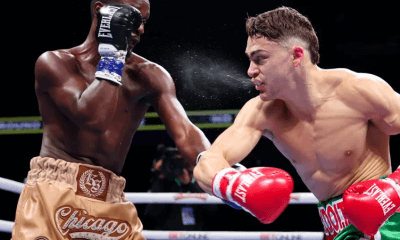
 Featured Articles3 weeks ago
Featured Articles3 weeks agoOscar Duarte and Regis Prograis Prevail on an Action-Packed Fight Card in Chicago
-
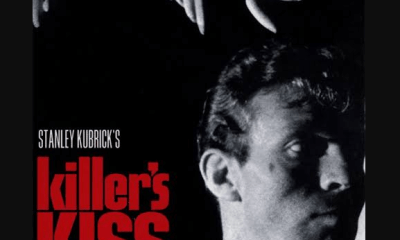
 Featured Articles2 weeks ago
Featured Articles2 weeks agoThe Hauser Report: Cinematic and Literary Notes
-
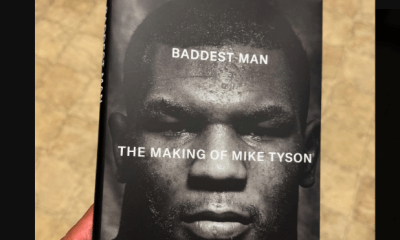
 Book Review1 week ago
Book Review1 week agoMark Kriegel’s New Book About Mike Tyson is a Must-Read
-

 Featured Articles3 weeks ago
Featured Articles3 weeks agoRemembering Dwight Muhammad Qawi (1953-2025) and his Triumphant Return to Prison
-
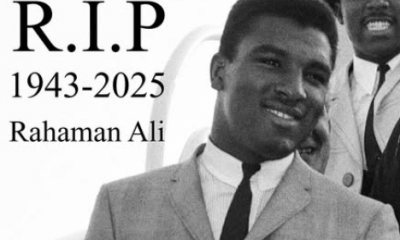
 Featured Articles2 weeks ago
Featured Articles2 weeks agoRahaman Ali (1943-2025)
-
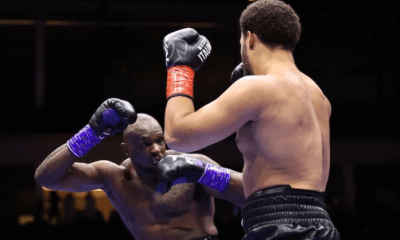
 Featured Articles4 days ago
Featured Articles4 days agoMoses Itauma Continues his Rapid Rise; Steamrolls Dillian Whyte in Riyadh
-

 Featured Articles2 weeks ago
Featured Articles2 weeks agoTop Rank Boxing is in Limbo, but that Hasn’t Benched Robert Garcia’s Up-and-Comers












